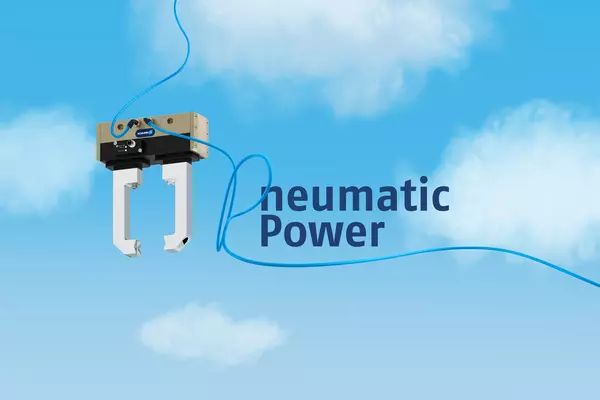In the space of robotics and automation, the ability to grasp and manipulate objects with precision is paramount. Pneumatic grippers have emerged as essential components for robotic arms, offering reliable and efficient gripping solutions for a wide range of applications. From manufacturing and assembly lines to material handling and pick-and-place operations, pneumatic grippers play a pivotal role in enhancing productivity and versatility.
In this comprehensive guide, we delve into the workings of pneumatic grippers, their types, applications, and how to effectively use them for robotic arm operations.
Understanding Pneumatic Grippers
Pneumatic grippers are robotic end-effectors that utilize compressed air as the driving force to grasp, hold, and release objects. They consist of a housing, actuator mechanism, jaws or fingers, and control valves. When pressurized air is supplied to the gripper, the actuator mechanism engages, causing the jaws to close and grip the object. By controlling the airflow and pressure, operators can precisely manipulate the gripping force and speed of the gripper.
Types of Pneumatic Grippers
- Parallel Jaw Grippers:
These grippers feature two parallel jaws that move simultaneously to grip objects with uniform pressure. Parallel jaw grippers are versatile and suitable for handling a wide range of object shapes and sizes.
- Angular Jaw Grippers:
Angular jaw grippers have jaws that move in an angular or scissor-like motion. This design allows for a wider range of object sizes to be gripped securely, making them ideal for irregularly shaped objects.
- Three-Finger Grippers:
Three-finger grippers have three individual fingers that can move independently. This design offers increased flexibility and the ability to grip objects from multiple angles, enhancing the gripper’s adaptability.
- Two-Finger Grippers:
Two-finger grippers are simplistic in design, featuring two opposing fingers that close to grip the object. They are commonly used for basic pick-and-place operations and handling small objects.
- Rotary Grippers:
Rotary grippers allow for the rotational manipulation of objects. They are often used in applications where objects need to be rotated or positioned at specific angles.
How to Use Pneumatic Grippers for Robotic Arm Operations?
- Mounting and Integration:
Begin by securely mounting the pneumatic gripper to the robotic arm’s end-effector. Ensure proper alignment and connection to the robot’s pneumatic system. Integrate the gripper with the robot’s control software for seamless operation.
- Programming Gripper Movements:
Using the robot’s programming interface, define the gripping points, object dimensions, and gripping force required. Program the gripper to open, close, and release the object as per the desired sequence.
- Adjusting Gripping Force:
Pneumatic grippers offer adjustable gripping force to accommodate different object weights and materials. Fine-tune the gripping force by regulating the air pressure supplied to the gripper through the pneumatic system.
- Configuring Gripper Speed:
Control the speed at which the gripper opens and closes to ensure smooth and precise movements. Adjust the pneumatic valves or programming parameters to achieve the desired gripping speed.
- Implementing Gripper Sensors:
To enhance gripping accuracy and safety, integrate sensors such as proximity sensors or force/torque sensors with the gripper. These sensors provide feedback on object detection, grip force, and object positioning.
- Testing and Calibration:
Before deploying the robotic arm with the pneumatic gripper in operational tasks, conduct thorough testing and calibration. Verify the gripper’s gripping force, speed, and accuracy by running test cycles with sample objects.
Applications of Pneumatic Grippers
- Manufacturing and Assembly:
Pneumatic grippers are extensively used in manufacturing and assembly lines for handling components, placing parts, and assembling products.
- Material Handling:
In warehouses and logistics facilities, pneumatic grippers enable the efficient loading, unloading, and stacking of goods and materials.
- Packaging and Palletizing:
Grippers are employed in packaging operations to pick, place, and seal packages. They also facilitate palletizing tasks by arranging products onto pallets.
- Automotive Industry:
Robotic arms equipped with pneumatic grippers are used for tasks such as parts handling, welding, painting, and assembly in the automotive sector.
- Electronics and Semiconductor:
Grippers play a crucial role in delicate electronics assembly, semiconductor handling, and PCB (Printed Circuit Board) manufacturing.
- Food and Beverage Industry:
Pneumatic grippers are utilized for picking and packaging food products, sorting items on conveyor belts, and handling bottles and containers.
Advantages of Pneumatic Grippers
- Fast and Efficient Operation:
Pneumatic grippers offer rapid actuation and release times, enabling quick and efficient handling of objects.
- Cost-Effective Solution:
Compared to other types of grippers, pneumatic grippers are generally more cost-effective to purchase, operate, and maintain.
- Adjustable Gripping Force:
The gripping force of pneumatic grippers can be easily adjusted to suit different object weights and surface conditions.
- Reliability and Durability:
Pneumatic grippers are known for their robustness and reliability, capable of withstanding harsh industrial environments.
- Safe Operation:
With proper programming and integration of sensors, pneumatic grippers ensure safe handling of objects, preventing damage or injury.
- Compatibility with Various Objects:
Pneumatic grippers can handle a wide range of object shapes, sizes, and materials, making them versatile for diverse applications.
Conclusion
Pneumatic grippers are indispensable tools for robotic arm operations, offering precise, efficient, and versatile gripping solutions across various industries. Understanding the types, functions, and applications of pneumatic grippers is essential for maximizing their potential in automation processes.
Whether it’s handling components on a manufacturing line, picking and placing items in a warehouse, or assembling intricate electronics, pneumatic grippers provide the gripping force and control necessary for seamless operations. By following proper integration, programming, and adjustment procedures, operators can harness the power of pneumatic grippers to enhance productivity, efficiency, and safety in robotic arm applications.



